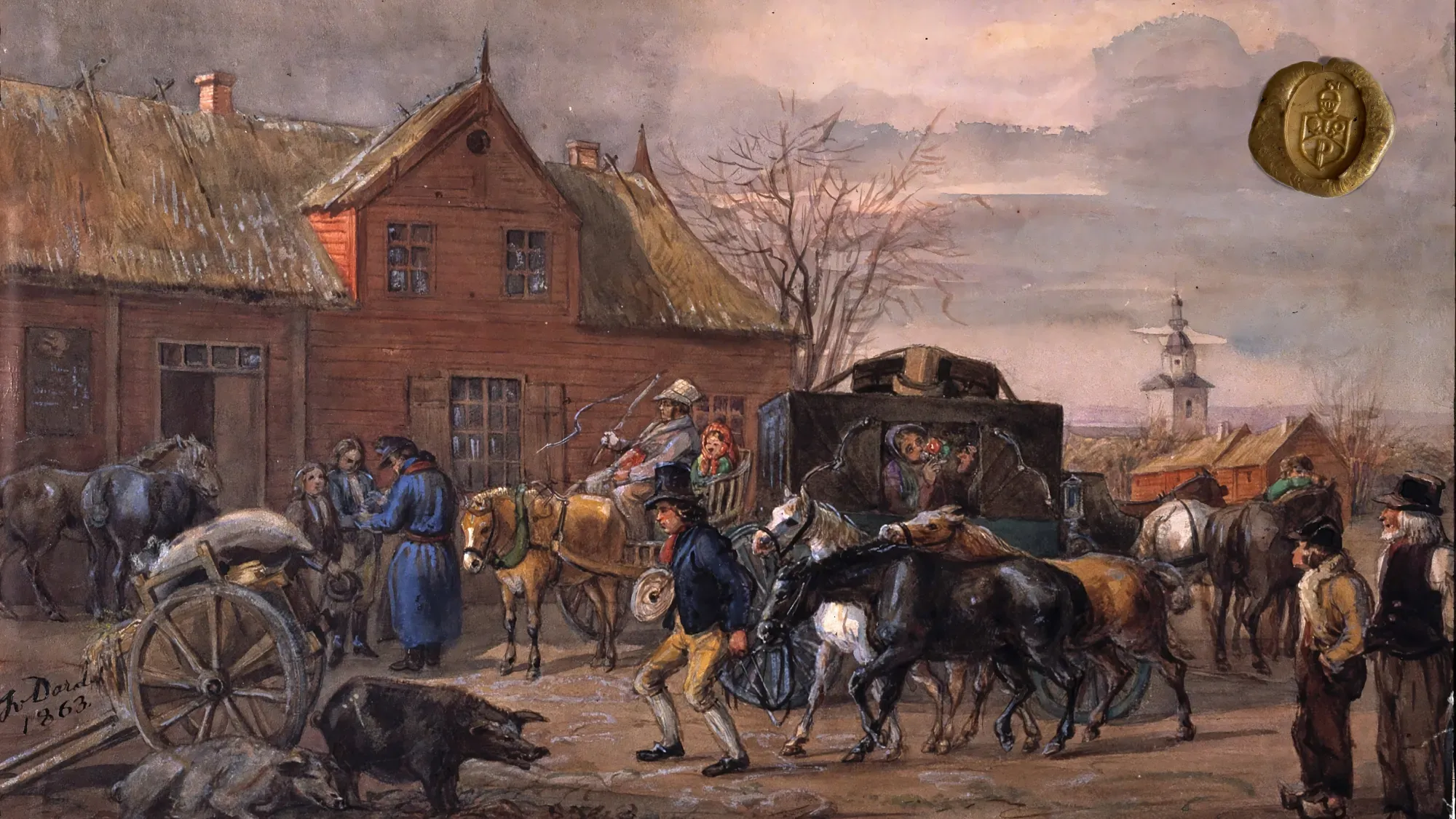Swedes are no strangers to alcohol, with drinking establishments in existence as far back as the middle ages. The 17th century was a significant time in this particular history, with inns, taverns and coffee houses becoming more popular and positively propagating – so much so that their numbers had to be limited, legislations decreed around the sale of spirits, timing restrictions imposed, and punishments enacted for unruly behaviour.[[1]]
The road from Växjö
A gästgivaregård referred to officially sanctioned or licensed inns in Nordic countries that functioned as rest stops on travel routes. They provided travellers with food, lodging, and stables for horses as well as carriages, and also served as significant meeting points.
Ryssby's Nygård Inn was one such guest house, situated on the main road from Växjö and “east of the church”, about 14 miles from Ljungby.[[2]] The road cut through the parish, and the inn was likely centrally located, given its proximity to the church. Later, the building was converted into an agricultural school. The inn can be found on a map of Sunnerbo as early as 1685, drawn by Assar Rohman,[[3]] and records of its innkeepers appear in the local county office lists in 1789.
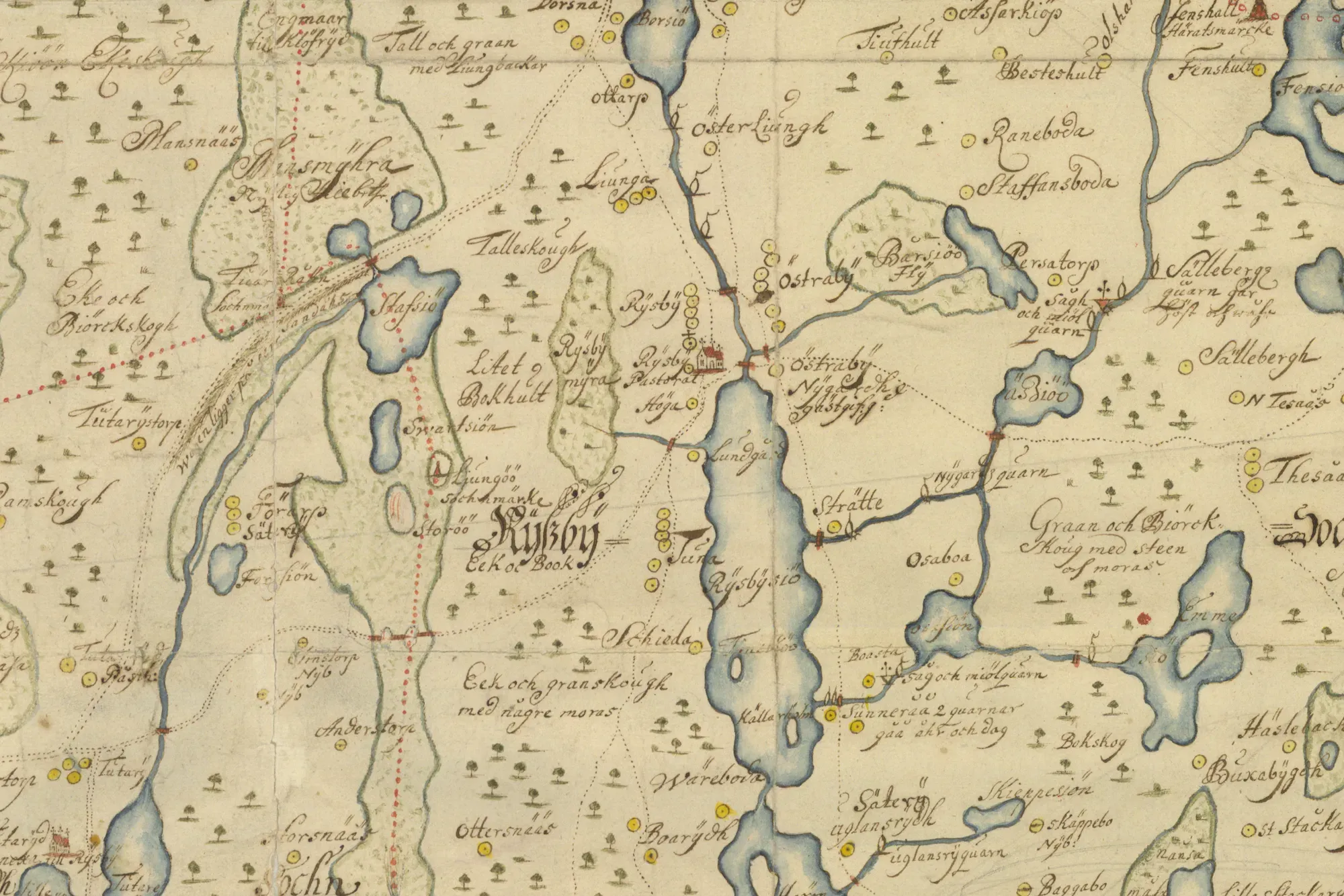
A family business
Among the known innkeepers was Anders Nilsson, from the Nygårds family, which owned the inn for six generations. It sprawled across two farms belonging to the family. Nilsson married the sheriff's daughter, and they had twelve children.[[4]] The eldest son, Jon, would take over the inn upon his father's death in 1684.[[5]] Jon was, in turn, succeeded by his son Anders Jonsson; then his son-in-law Håkan Svensson (b. 1740) inherited the property.
Håkan's daughter Anna Stina Håkansdotter (b. 1775) became the first woman of the family to oversee the inn, and her nephew Anders Johan Svensson (b. 1815) would be the final innkeeper from the family. As a testament to the importance of the inn in the region, the family is honoured through a memorial stone at the Ryssby cemetery known as the Nygårds Stone, commemorating Anders Nilsson and his wife.
Additionally, one of the maids who worked at the inn was the grandmother of the famous journalist Ingmar Lindmarker. His father, entrepreneur Axel F. Lindmarker, owner of the Grand Hotel in Falun, had started out living at Nygård Inn with his mother.[[6]]
A feisty daughter
The inn's first owner, Anders Nilsson, had an outspoken daughter named Bengta. In 1674, she was mentioned in records for calling her parents’ nemesis Ryttaren Nils Jacobsson a “scoundrel”, but she was not convicted “as the statement was made in a pressured situation, when the rider was chasing Bengta's husband with two knives.”[[7]]
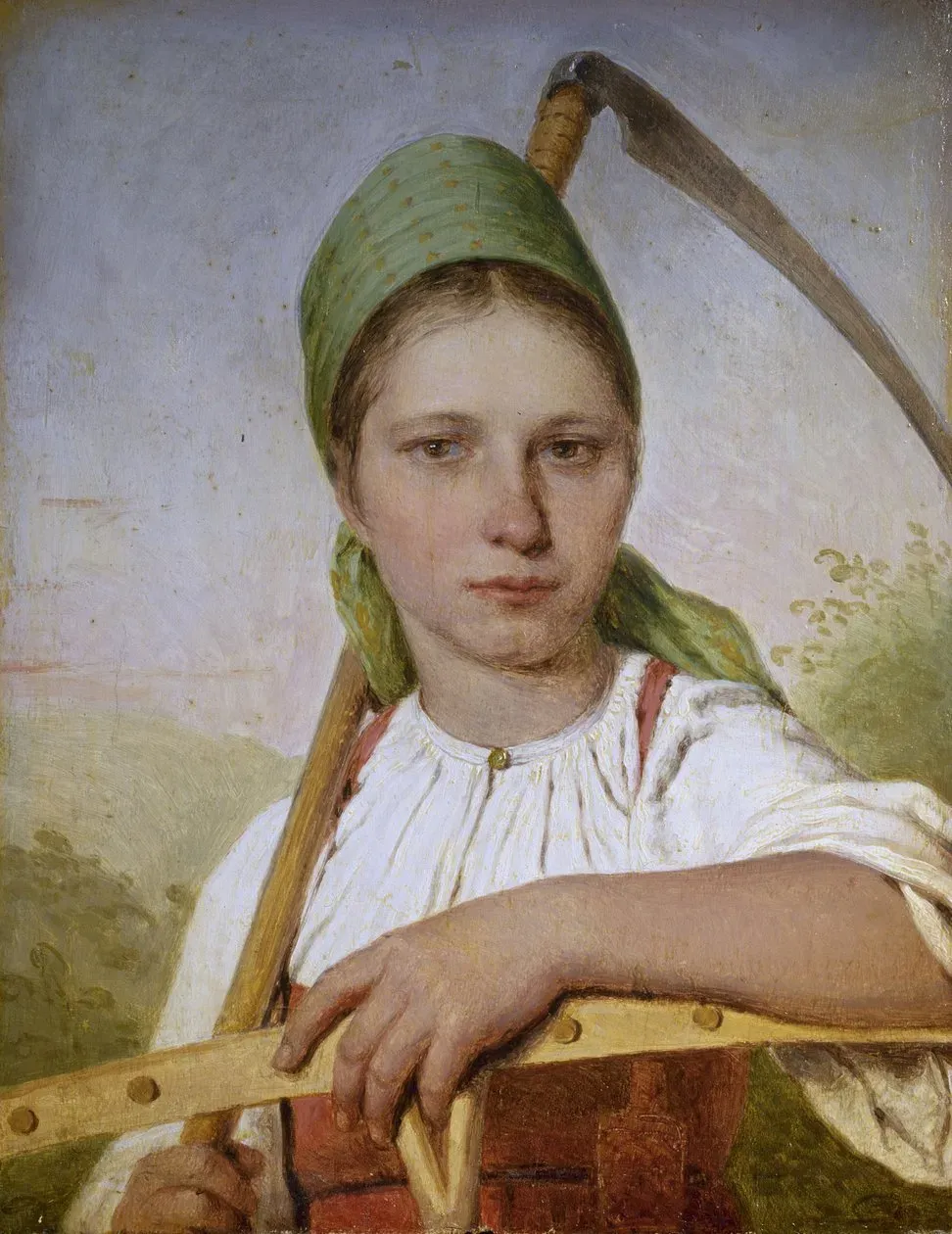
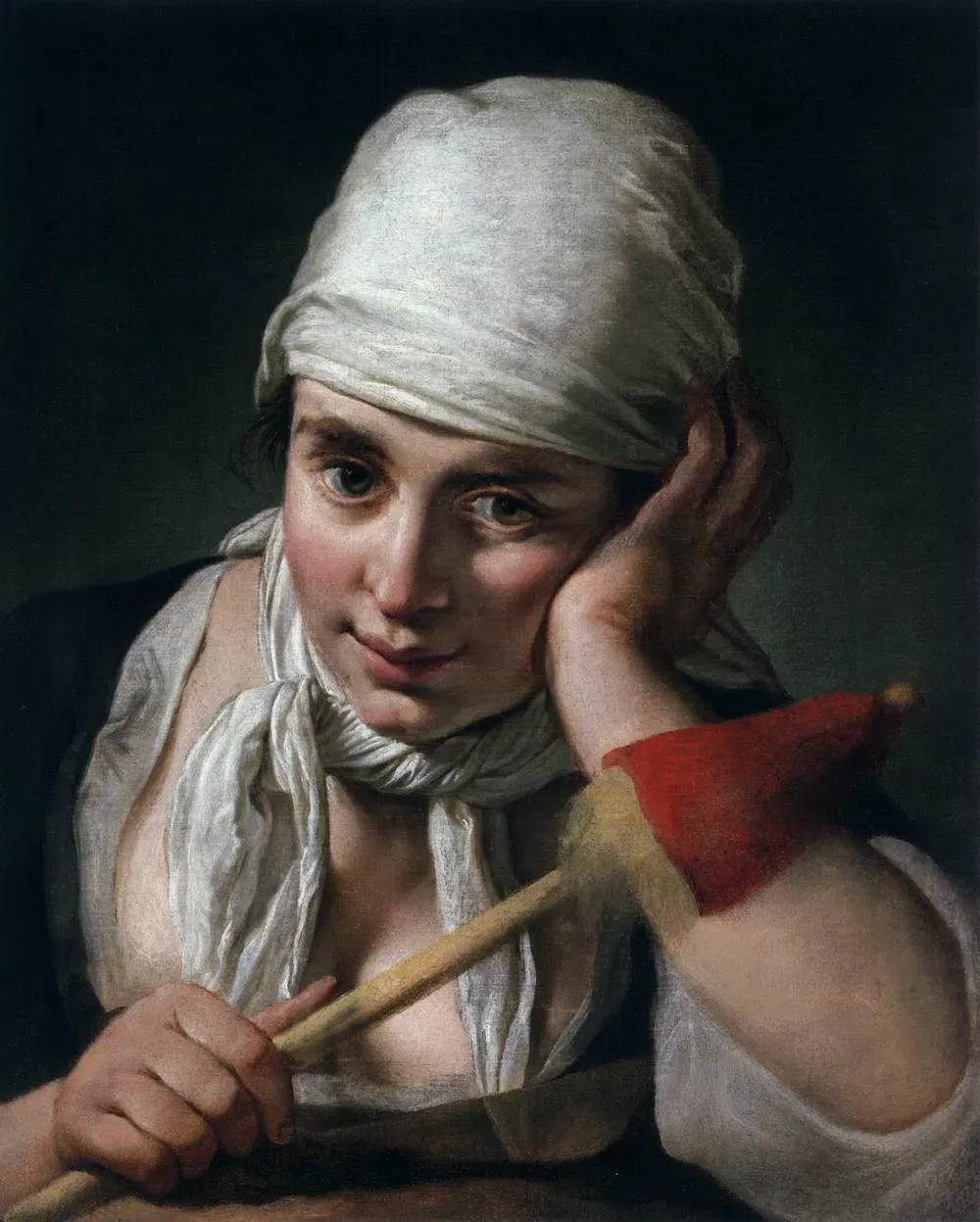
Fig. 3 - Alexey Venetsianov (1780-1847), Peasant Woman with a Scythe (Pelageia), c. 1824, oil on panel. A scythe, similar to the "hazel scythe" wielded by Bengta, was a common farm implement. Image by Wikimedia Commons (PDM). Fig. 4 - Giacomo Ceruti (1698-1767), Girl with a Distaff, c. 1740, oil on canvas. The råcketrå, Ingeborg's weapon of choice, was the wooden staff of a distaff, a common tool for spinning. Image by Web Gallery of Art (PDM).
In 1677, she was fined three marks, as per the punishment for swearing at that time. Her mother and husband, Erich in Ottersnäs, complained against this conviction. In 1683, she clashed with Jöns Netherwood about their children and farm animals.
Things got violent, with Bengta attacking Ingeborg with a hazel scythe, while the latter's weapon of choice was a råcketrå.
More specific to the context of Nygård Inn, in 1705, Bengta accused one of the employees, Ingeborg Persdotter from Tuna, of being “a double whore and double thief". Things got violent, with Bengta attacking Ingeborg with a hazel scythe, while the latter's weapon of choice was a råcketrå.[[8]] Bengta then switched to a harrow stick, attacking her opponent's head. She confessed to her acts, and was required to pay a heavier fine than Ingeborg, suggesting that she caused more damage and/or was the aggressor.
A rowdy trio
Among the inn's infamous patrons were two Påhlman brothers, Jöran and Claes, who dropped in at Nygård on the night of 24 and 25 November 1695. Jöran was then a corporal in the Kronoberg regiment, and they were also accompanied by Sergeant Sven Stråle. The innkeeper at this time was likely Jon Andersson, who found himself at the receiving end of progressively drunk and rowdy behaviour as the night progressed.
...accused the trio of excesses, specifically 'breaking candlesticks, tankards, and mugs, as well as windows, and more'.
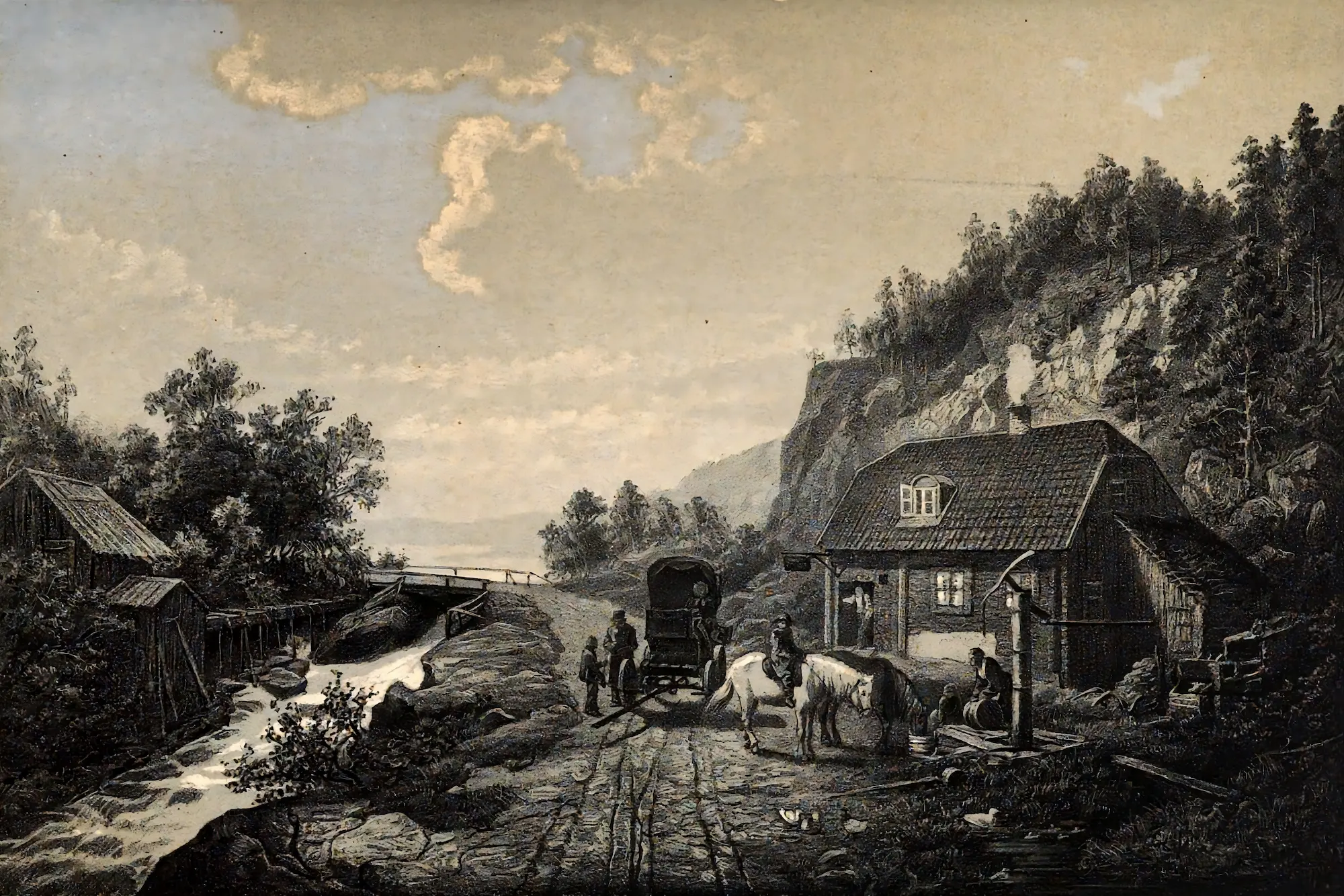
A court record from 4 February 1696 detailed the offences. Sheriff Jonas Broman accused the trio of excesses, specifically “breaking candlesticks, tankards, and mugs, as well as windows, and more". A later entry in the court’s fine-roll clarifies the offence was slagzmähl, strongly suggesting the 'excesses' also included brawling or assault. The brothers both confessed – Jöran to tearing down and breaking two pieces of bars by the fireplace, and Claes to breaking a jug. Ironically, the court records refer to all three men by the gentry honorific 'Monsieur', a title that stood in stark contrast to their confessed behaviour. There was a further accusation, that “the lock on the main cottage door through their causing had become broken”, which all three vehemently denied. Interestingly, nearly eight decades prior, the brothers' grandfather was convicted of similar misconduct at a tavern in Stockholm – a family legacy of a decidedly different kind.
The Sunnerbo District Court delivered its judgement at Ljungby, and they were each fined 40 marks of silver in accordance with the “41st point in His Royal Majesty's most gracious inn ordinance issued in the year 1664." This fine was separate from the court’s order that they must also pay for the broken and damaged items "without fail", based on the valuation of official appraisers, and given a formal warning against such behaviour in the future.[[9]] The Nygård Inn recovered.
Support the Archive
Your contribution supports our ongoing research, preservation efforts, and storytelling. Help us bring this important cultural heritage to light.
Make a Contribution[[1]]: According to a decree by Charles IX in 1605, for instance, only six inns and two walk-in kitchens were allowed to be open in Stockholm; by 1623, there were restrictions such as taverns and wine cellars were not allowed to sell beer or wine after 8pm and drunken behaviour was to be punished.
[[2]]: Rogberg, Samuel. Historisk Beskrifning Om Småland I Gemen, I Synnerhet Kronobergs Och Jönköpings Lähner, Ifrån Äldsta, Til Närwarande Tid, Om Thess Politie, Natural-Historia, Bergwärk, Kyrko-Stat, Folkmängd, Hushållning, Kyrkor, Slott Och Herregårdar, Med Mera Minnes Wärdt. Stockholm: Kongl. Amiralitets Boktryckeriet, 1770, p. 426; Bohlin, Abraham (1838). Handbok för resande i Sverige/§33 N:o 2, Till Wexiö via Halmstad. Upsala: W Lundequist. Libris 1499381
[[3]]: Rohman was the Lantmätare (surveyor) at the time; the map is of Sunnerbo district (historic name for the region that included Ryssby).
[[4]]: Anders Nilsson married Ingeborg Jonsdotter in 1646. Nilsson, Lena. "Anders Nilsson." Nilssons SläKtsida. Accessed May 21, 2025. https://lenanilsson.com/person.php?id=634
[[5]]: Anders’ son-in-law Håkan Månsson also moved to the inn when Jon – then known as Jonas Nyman – took over.
[[6]]: Sahlberg, Bengt. 2018. Homo Selficus En Digital Krönika. https://www.ebsahlberg.se/Homo-Selficus/
[[7]]: Holmqvist, Ulla-Britt. "Äldre inlägg (arkiv) till 2003-01-22" Anbytarforum. November 10, 2002. https://forum.rotter.se/index.php?action=printpost;msg=379395
[[8]]: Early modern Swedish word for "distaff" (a wooden stick or spindle for spinning wool).
[[9]]: Göta Hovrätt - Advokatfiskalen Kronobergs län (G) EVIIAAAD:41 (1696-1698) Bild 150/sid 21 (AID: v206282.b150.s21, NAD: SE/VALA/0382503)


